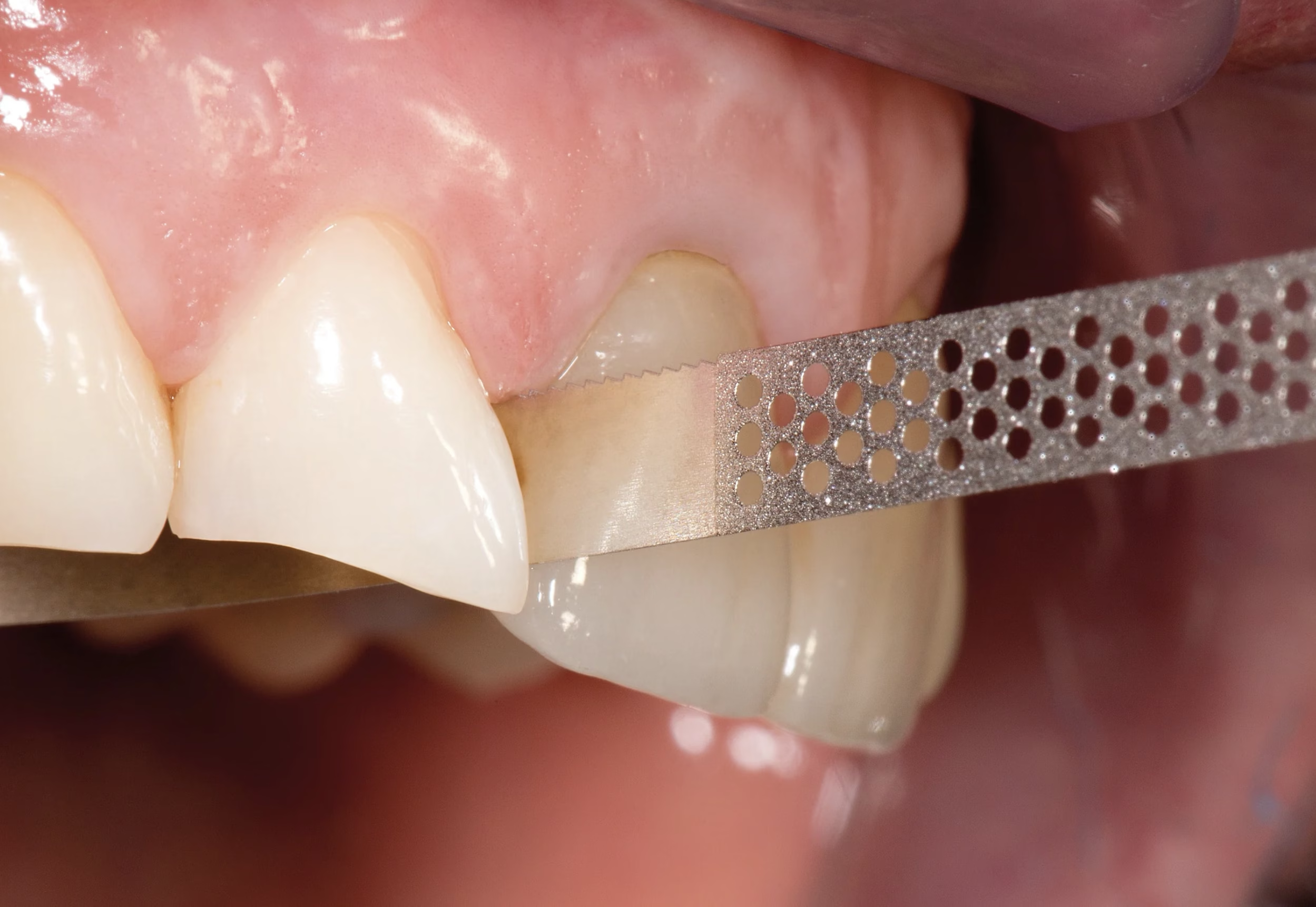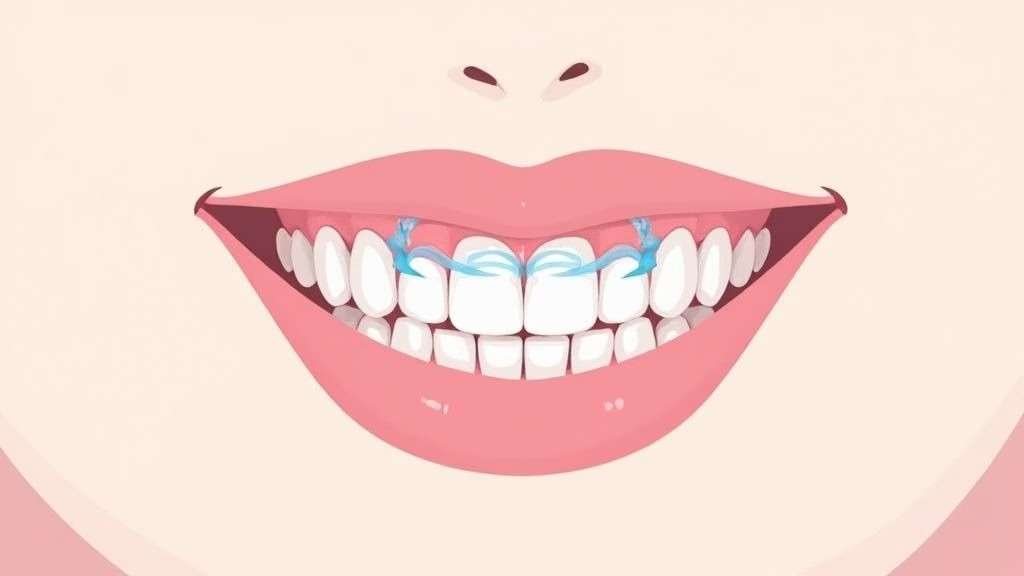How to Straighten Teeth at Home: A Comprehensive Guide for UK Adults

Understanding The Rise of At-Home Teeth Straightening
More UK adults are seeking teeth alignment solutions beyond traditional braces. This trend stems from changing work habits and increased online presence. At-home teeth straightening has emerged as a popular choice for those wanting a more convenient path to a straighter smile.
The Influence of Remote Work and Online Interactions
Video meetings have put our faces in focus like never before. As remote work becomes standard, many professionals are more conscious of their smile during online interactions. A British Orthodontic Society study from April 2023 found that 76% of orthodontists saw more adult patients in the past three years. The study revealed that 65% of orthodontists linked this increase directly to online working and video calls. Learn more details at British Orthodontic Society Survey.
Shifting Perceptions and Increased Accessibility
People now view adult teeth straightening differently. What was once seen mainly as a teenage treatment is increasingly recognized as an investment in overall wellness at any age. Clear aligners and other discreet options have helped remove the stigma around adult orthodontics, leading more people to take action on improving their smile.
The Role of Technology and Convenience
New technology has made teeth straightening more accessible than ever. Digital consultations and at-home impression kits mean fewer office visits are needed. This convenience particularly appeals to those with packed schedules or limited access to orthodontist offices. The simplified process of starting treatment has contributed significantly to the growing popularity of at-home solutions. The next section explores additional factors driving adult orthodontics demand in Britain.
The Growing Demand for Adult Orthodontics in Britain

Straight teeth aren’t just for teenagers anymore. Adults across Britain are increasingly seeking orthodontic treatment to improve their smiles. This shift reflects broader changes in how people view dental care and self-improvement, with several key factors driving this trend.
The 25-45 Demographic: A Driving Force
Professionals aged 25-45 make up the largest group pursuing teeth straightening treatments. Many see a confident smile as essential for career growth and networking success. For these adults, orthodontic treatment represents an investment in both their personal and professional futures.
Gender and Treatment Choices
Men and women approach teeth straightening differently, though both groups show growing interest. Research shows women often focus on appearance and social factors, while men tend to emphasize practical benefits and overall dental health. These distinct preferences help providers create more targeted treatment plans.
The Influence of Social Media
Social platforms have changed how people view their smiles. Regular exposure to carefully curated photos has made many adults more aware of their teeth. This is especially true for younger adults who use social media frequently, though it’s worth noting that online images often present unrealistic standards.
Changing Perceptions and the Rise of At-Home Solutions
Adult orthodontics has become widely accepted, moving far beyond its traditional association with teenage years. A British Orthodontic Society (BOS) survey from April 2020 found that 80% of orthodontists reported more adult patients seeking treatment. Find more detailed statistics here. The introduction of affordable at-home options has made teeth straightening accessible to many who previously considered it out of reach. As a result, more adults are taking steps to achieve their desired smile.
Your Journey Through At-Home Teeth Straightening

At-home teeth straightening can help you achieve a brighter smile from the comfort of your home. Let’s walk through each step of the process so you can understand what to expect and make informed decisions about your dental care journey.
Initial Assessment and Consultation
The process begins with an online dental assessment where you’ll answer questions about your oral health history and smile goals. Many providers also offer virtual consultations with dental professionals to review your case in detail and determine if you’re a good candidate for at-home treatment.
Creating Dental Impressions
If approved for treatment, you’ll receive an impression kit to create molds of your teeth at home. The kit includes detailed instructions for biting into putty-filled trays that capture the exact shape of your teeth. You’ll mail these impressions back to the provider for professional evaluation. For more details on the differences between at-home and in-office treatment, check out this comprehensive comparison.
Treatment Planning and Aligner Fabrication
After receiving your impressions, dental technicians create digital models of your teeth to map out the precise movements needed. Based on this customized treatment plan, they fabricate a series of clear aligners designed to gradually shift your teeth into proper alignment.
Wearing and Monitoring Your Aligners
You’ll receive your complete set of aligners with instructions to wear each one for 1-2 weeks. Consistent wear is essential for the best results. Regular virtual check-ins with your provider help track your progress and address any concerns that arise during treatment.
Retention: Maintaining Your New Smile
After completing your aligner treatment, proper retention is critical to prevent teeth from shifting back. Your provider will recommend appropriate retainers and guide you on how long to wear them to maintain your newly straightened smile.
Understanding this process helps set realistic expectations for at-home teeth straightening. While these aligners work well for many people, consulting a dental professional ensures you choose the most appropriate treatment for your specific needs.
Essential Safety Considerations and Risk Management
Making informed decisions about oral health requires a clear understanding of the safety aspects of at-home teeth straightening. Let’s explore the key safety considerations and proper risk management practices.
Understanding Potential Risks
At-home teeth straightening needs careful attention to avoid complications. Without proper professional oversight, aligners may shift teeth too quickly, potentially causing skewed bite alignment or tooth loosening. Many dental professionals highlight these concerns, as improper treatment can impact long-term oral health. Read more about the risks of at-home aligners to make an educated choice about your treatment.
Recognizing Warning Signs
Quick identification of issues helps prevent complications. Watch for signs like ongoing pain, swollen gums, and problems with chewing. Pay attention if your aligners stop fitting correctly or if you notice unexpected changes in how your teeth come together. These symptoms may signal the need for professional evaluation.
Minimizing Risks Through Professional Oversight
Regular dental supervision plays a vital role in safe teeth straightening. Even with at-home aligners, schedule check-ups with your dentist or orthodontist. These visits allow professionals to track your progress, spot potential issues early, and modify your treatment plan when needed. This hands-on approach helps ensure better outcomes.
The Importance of Regular Monitoring
Success depends on consistent tracking of your progress. Follow your provider’s guidelines for wearing aligners and maintaining good oral hygiene. Attend all scheduled check-ups, whether virtual or in-person, so professionals can review your progress and address concerns quickly.
Safeguards for Successful Teeth Straightening
People who achieve the best results make oral health their priority. This means thorough brushing and flossing, especially after eating. They also stick closely to their prescribed aligner schedule. Keeping open communication with dental professionals helps resolve questions throughout treatment. Taking these safety steps improves your chances of achieving your desired smile. With Toothfairy, you get expert guidance and support from start to finish, helping reduce risks and improve results.
Maintaining Your Newly Straightened Smile
Getting a straighter smile with at-home aligners is a big milestone. But it’s important to understand that the work isn’t completely finished once your treatment ends. Long-term success requires developing good habits to protect your new smile from shifting back. Let’s explore the key elements of maintaining your results.
The Importance of Retainers
Think of retainers as your smile’s support system – they help your teeth stay in their new positions. Just like maintaining muscle after working out, your teeth need ongoing support to keep their alignment. Your dental provider will recommend the best type of retainer for your specific needs and guide you on proper wear time. Following your retainer plan is essential for preserving your results.
Establishing a Solid Oral Hygiene Routine
A healthy smile starts with good oral care habits. The basics make a big difference:
- Brush thoroughly at least twice daily with fluoride toothpaste
- Floss every day to remove plaque and food particles
- Schedule regular dental check-ups for professional cleaning
- Address any issues early before they become bigger problems
Preventing Shifting: Tips for Long-Term Success
Beyond retainers and daily care, here are key practices to maintain your new smile:
- Follow Instructions: Wear your retainer exactly as directed by your provider
- Watch What You Eat: Limit very hard or sticky foods that could affect your teeth alignment
- Address Grinding: Talk to your dentist about night guards if you clench or grind your teeth
- Stay Hydrated: Drink plenty of water to help wash away debris and keep your mouth healthy
- Keep Up Check-Ups: Regular dental visits help monitor your alignment and catch any issues early
By sticking to these guidelines, you’ll help ensure your straight smile stays that way for years to come. Toothfairy provides support throughout your teeth-straightening journey and afterwards. Learn more about achieving your ideal smile with Toothfairy here.
Making Your Informed Treatment Decision
Straightening your teeth is an important decision that affects both your smile and confidence. Let’s explore the options available in the UK to help you make the best choice for your needs.
Comparing Teeth Straightening Options in the UK
When it comes to achieving a straighter smile, there are several proven methods to consider. Here are the main options:
- Traditional Braces: Metal brackets and wires adjusted regularly by an orthodontist. While highly effective for complex cases, they are the most noticeable option.
- Ceramic Braces: Work like metal braces but use tooth-colored brackets for a more subtle appearance.
- Clear Aligners: Custom-made clear plastic trays that gradually shift teeth. Available as at-home treatments with remote monitoring or in-office systems with direct orthodontist oversight.
| Feature | |Traditional Braces| | |Ceramic Braces| | |Clear Aligners (At-Home)| | |Clear Aligners (In-Office)| |
|---|---|---|---|---|
| Visibility | High | Medium | Low | Low |
| Cost | £2,000-£6,000 | £3,000-£6,000 | £1,500-£3,000 | £3,000-£5,500 |
| Convenience | Low | Low | High | Moderate |
| Treatment Time | 18-24 months | 18-24 months | 4-12 months | 6-18 months |
| Case Types | All Cases | Most Cases | Mild to Moderate | All Cases |
Cost Considerations and NHS Options
The cost of teeth straightening varies significantly between treatments. NHS treatment may be available for people under 18 who meet specific medical requirements. Contact your local NHS provider to check eligibility. For adults seeking private treatment, at-home aligners typically offer better value compared to traditional orthodontic options.
Is At-Home Teeth Straightening Right for You?
At-home aligners combine affordability with convenience, but they aren’t ideal for everyone. Consider these key factors:
- Case Complexity: Best suited for mild to moderate alignment issues
- Personal Discipline: Success requires following instructions and wearing aligners 20-22 hours daily
- Remote Care Preference: Most treatment monitoring happens through virtual check-ins
- Financial Considerations: More affordable than traditional orthodontic treatments
Take time to weigh these factors carefully. If you’re ready to explore at-home teeth straightening with expert oversight, Toothfairy offers free online consultations with qualified dentists to help you start your journey to a confident smile.
Last updated on February 17, 2025

Toothfairy Care Team
Toothfairy, is the world's smartest dental app, that connects patients to a dentist for a range of issues, from emergencies, cosmetics, prescriptions to virtual exams.
Toothfairy Care Team
Toothfairy, is the world's smartest dental app, that connects patients to a dentist for a range of issues, from emergencies, cosmetics, prescriptions to virtual exams.





